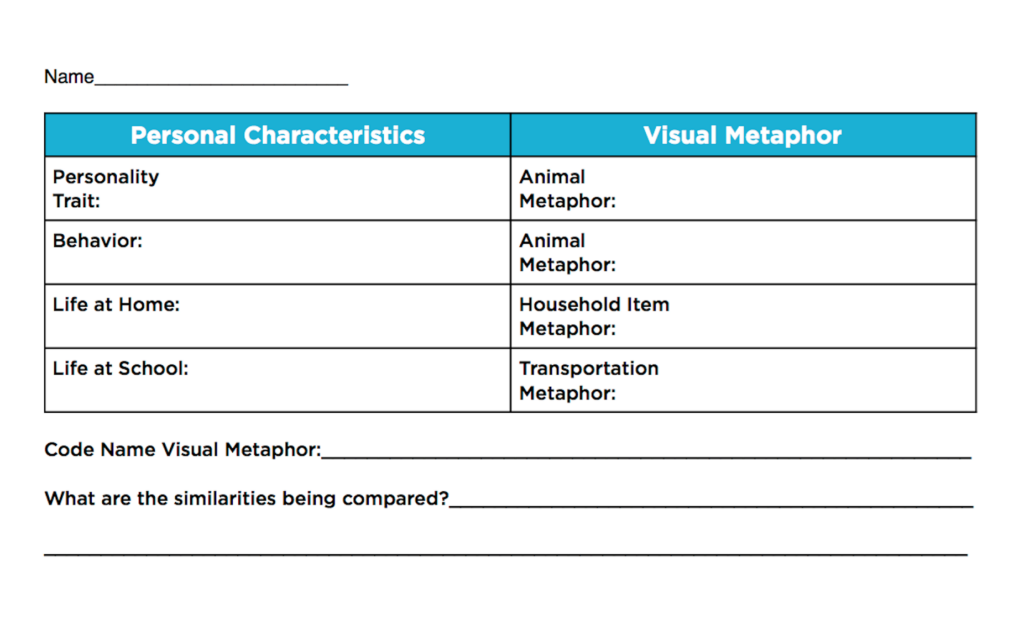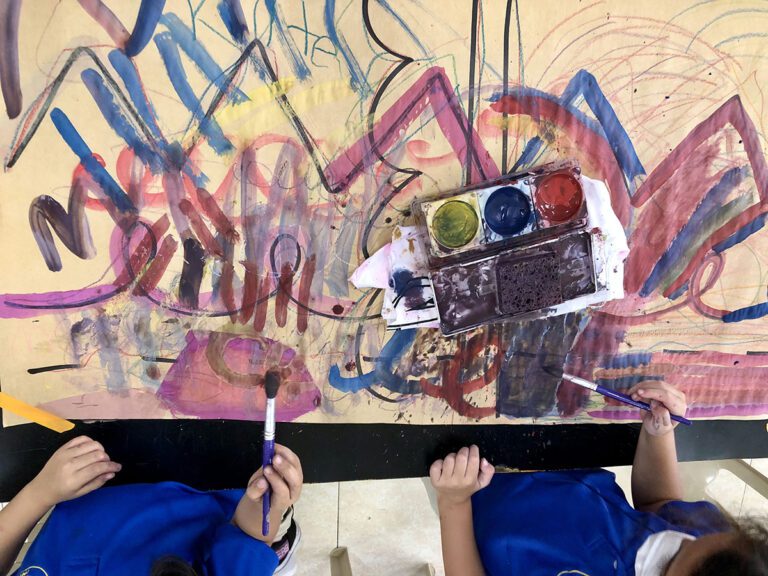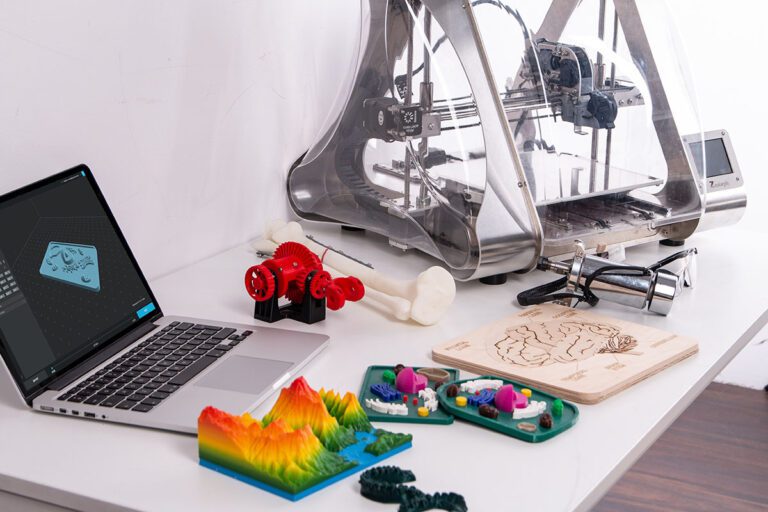The use of symbolism can transform student art. Understanding and being able to use symbolic imagery and visual metaphors empowers students’ voices and creative depths. One challenge is how to provide access to sophisticated concepts of symbolism in effective ways. Why not try a spin on the classic game, Pictionary?
Here’s how to teach symbolism and visual metaphor through games in the classroom.
Symbolic Pictionary
Introduce Symbolism
Begin by exploring what a symbol is. Some key vocabulary words to define first are symbol, symbolic, symbolic image, and visual metaphor. Students should understand that symbols represent something else. You can easily illustrate this point by providing simple symbols and asking students to identify what each represents: A peace sign represents peace, a green traffic light represents go, a heart represents love, etc.
You may also want to take this opportunity to analyze symbolism in relation to color. For example, ask students if a dozen red roses represent the same thing as a dozen white roses. Many will say they do not, which can start a great discussion.

Set Up the Game
To set up the game, you’ll need to do the following.
- Break the room into teams.
- Give each student materials to draw with. Dry-erase boards and markers work best, but pencils and paper will suffice.
- Create a slideshow with a word on each slide. Some ideas include hard work, strength, quickness, knowledge, anger, and relaxation.
Play the game
To start, show one of the slides. Once the word is shown, have students work together in their groups for 3-5 minutes to come up with a symbolic image to represent that word. When the group comes to a conclusion, all students should draw the agreed upon symbol. After the time is up, one person from each group should hold up their board or paper to show the symbolic representation.
Give one point if a team comes up with a symbolic image. Give two points to any teams that have unique images not replicated by other groups.
For example, let’s say the first word of the game is “school.” Groups 1, 2, and 3 show apples, groups 4 and 5 show pencils, and group 6 shows a book. Group 6 would earn two points for having a unique symbol, while all other groups would earn one.
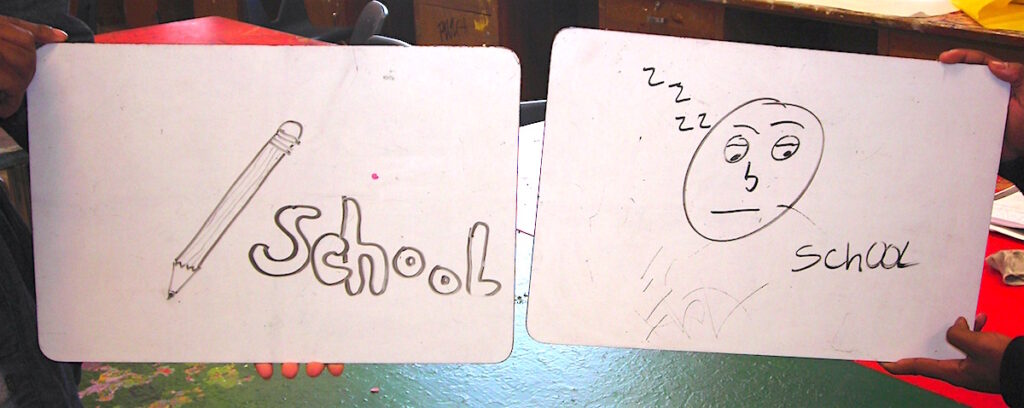
You can switch up the scoring in various ways. For example, maybe you give bonus points if students can clearly explain why they chose the symbol they did. Or, maybe students lose points if they use words or use emoji-style symbols.
If you’re looking for more ways to use games to enhance your students’ learning, head over to the Games in the Art Room PRO Learning Pack! Lindsey will share how to best design a game tailored to the needs of your students and share specific ideas to implement immediately in your art room!
Visual Metaphor Pictionary
Once your students have mastered symbolic images, it’s time to dig deeper. This is because symbolic images and visual metaphors can be different. For example, a cake in an art piece can be a symbol for an inner-struggle with food addiction or a condition such as diabetes. However, an artist could also use a cake as a metaphor for themselves. In that case, it would most likely mean that the artist believes that he or she is sweet, liked by many, or can really make the party.
Introduce Visual Metaphor
Start with animals when introducing visual metaphor. Have students choose an animal that they share some sort of a similarity with. One example students easily understand is that of comparing a lazy or tired person to a sloth. When students can compare themselves to an animal because of similar characteristics, they are able to create a metaphor.
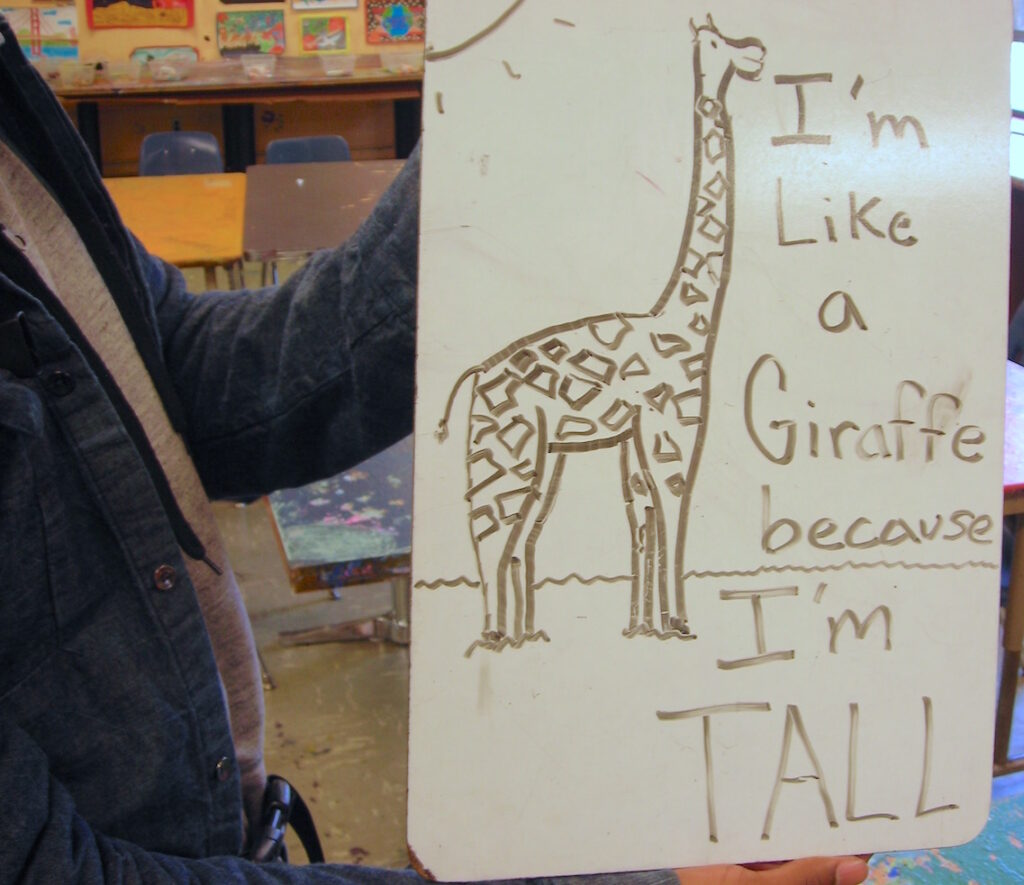
Then, give students a bit more scaffolding work. Break down a subject into various traits or characteristics in order to make connections. One way to do this is through a series of questions about an image such as:
- What do you see?
- What kinds of characteristics does this have?
- What is something that has similarities to this?
- What can this be a metaphor about?
Another way to get students warmed up for visual metaphor is a quick worksheet. Ask students to come up with a word or two that describes their own personal characteristics around their personality, behavior, life at home, and life at school. Then, have them compare those characteristics to something else with a similar characteristic. It can be helpful to give students a category to use for the metaphor. For example, what is a form of transportation that can be used as a metaphor to describe life in school?
Below is the sheet I use in my classroom. Feel free to download a copy to use or as inspiration to create your own.
Set Up the Game
Game set up is the same as Symbolic Pictionary.
- Break the room into teams.
- Give each student materials to draw with. Dry-erase boards and markers work best, but pencils and paper will suffice.
- Create a slideshow with a word on each slide. Some ideas are poverty, crime, wealth, success, perseverance, and change.
Play the Game
Again, show students a slide with a word or concept. Five minutes should be enough time to let students negotiate their responses and then come up with some quick renderings.
Push the metaphor game a step further by mandating an explanation of the metaphor. One point can still be given for a drawing, two points for a unique metaphor, and two additional points for an explanation.
So, if the word “school” is what students are making a metaphor about, make sure they can explain the connection. A popular metaphor students use for school is prison. Drawings are made with bars and locks. The key is to insist that students can break down the thinking that compares schools and prisons and give examples from each to support their opinions.
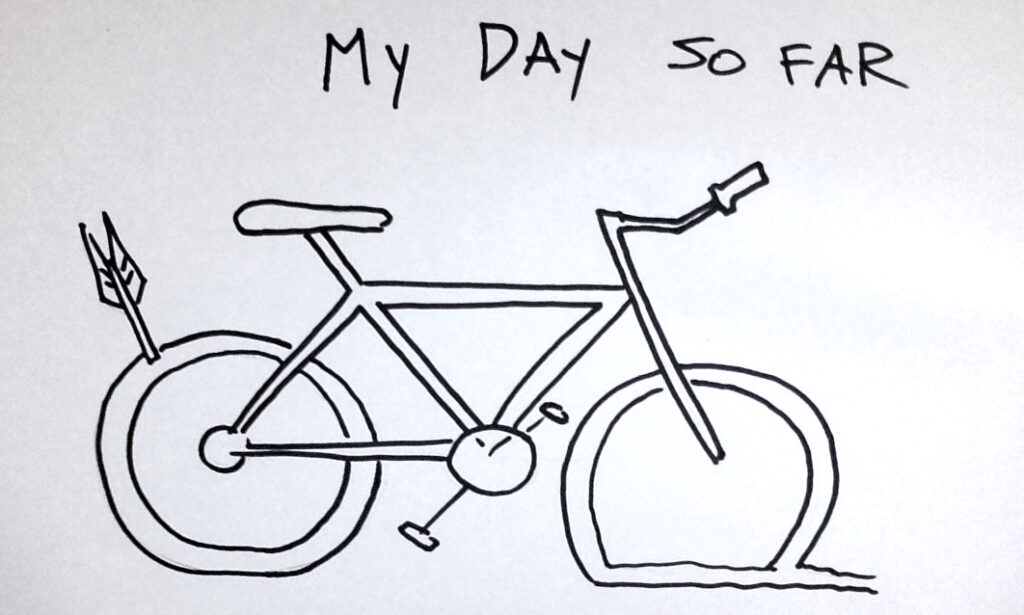
Symbolism can completely enhance student art. Symbolic imagery and visual metaphor can be a bit difficult for some students at first. However, adding the elements of collaboration within a game setting can help all students internalize and apply symbolism.
How do you introduce symbolism into your classes?
What other types of games or friendly competition have you used with students?
Magazine articles and podcasts are opinions of professional education contributors and do not necessarily represent the position of the Art of Education University (AOEU) or its academic offerings. Contributors use terms in the way they are most often talked about in the scope of their educational experiences.

